For over 55 years we have been carrying out construction projects all over the world, specialising in mining, drilling, tunnelling and infrastructural activities. In the Polish copper ore mines, we have built a few dozen shafts and hundreds of kilometres of underground headings and drifts. We have built a few dozen of metro, rail, road and hydro-engineering tunnels on four continents.
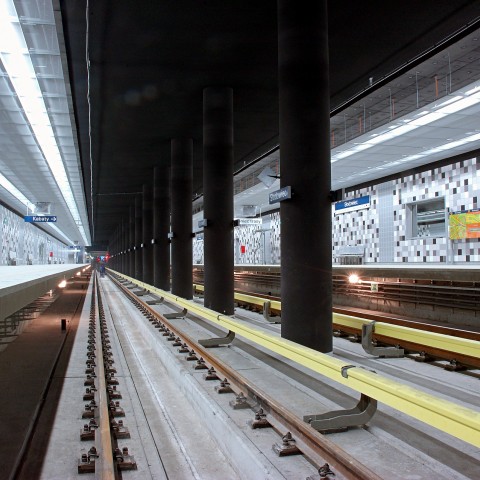
The Warsaw metro
The first line of the Warsaw metro is the most important project in the public transport area executed in the capital of Poland in the past few decades. In the years 1987-2008 PeBeKa was responsible for the boring of the eastern mainline tunnels between the “Politechnika” and “Słodowiec” stations; the company participated also in the construction of the “Politechnika”, “Centrum”, “Racławicka”, “Plac Wilsona”, and “Słodowiec” stations. It also built the pedestrian tunnel at Bankowy Square, the Park&Ride facility at the “Marymont” station, and the “Młociny” public transport hub.
The tunnelling works were performed with a non-mechanised open shield. Because of the difficult geological conditions and the occurrence of dry and loose sands, it was necessary to use the forward grouting technique in order to consolidate the sands chemically.
Besides the tunnels, PeBeKa engineers constructed auxiliary facilities such as small shafts and ventilation centres, and mounted particular elements of the equipment
The most difficult engineering tasks during the construction of the metro line included the building of a shallow pass of the mainline tunnels under the Łazienkowska Thoroughfare. At the depth of just 80 cm under the tarmac surface of the road, PeBeKa bored two mainline tunnels and a technical communication tunnel, each with the length of 88 metres.
During the boring of the “Politechnika” – “Centrum” section it was necessary to position the tunnel at the depth of about 15 m under the surface and just 1.5 m under the operational four-track cross-city railway tunnel and under the pedestrian underpasses at the crossroads of Marszałkowska Street and Jerozolimskie Avenue. This task consisted in driving a round tunnel boring shield into a rectangular concrete tunnel built many years before.
For PeBeKa, the construction of the Warsaw metro was one of the most important projects related to the construction of transport infrastructure. The company participated actively in the construction of the considerable part of the 24 kilometres of the M1 line, the 6 metro stations, the key pedestrian traffic tunnel in Śródmieście, the P&R car park at the “Marymont” station, and the “Młociny” public transport hub, a facility of extreme importance for the northern districts of Warsaw and the neighbouring communes.
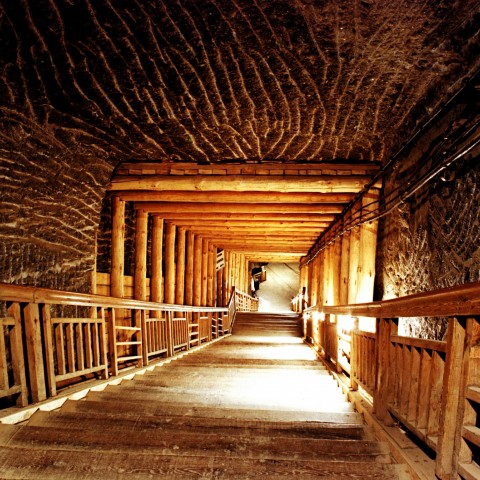
The restoration of the Wieliczka Salt Mine
The Wieliczka Salt Mine is one of the oldest salt mining facilities in Poland. Simultaneously it is the oldest operating business enterprise in Poland. In view of its indisputable cultural values, the mine has been entered in the register of historical monuments and UNESCO's world heritage list. Since 1994 it has enjoyed the status of Monument of History, which is a form of legal protection and a distinction for the most valuable and important monuments located in the territory of Poland.
The Salt Mine in Wieliczka is one of the most recognizable and most frequently visited historical monuments in Poland. Every year it is visited by more than one million tourists. However, over the course of time the mine required a comprehensive restoration process. The decommissioning of salt chambers at the particular levels of the mine and the reconstruction of headings and chambers was the only way to save this unique facility from destruction. The strict requirements of the mining law, the construction supervision exercised by the heritage conservation officer, and mainly the original character of the conducted works and used technologies aimed at ensuring possibly the closest faithfulness to the historical form of the mine headings, supports and equipment, required performance of the highest quality.
In consequence, the works conducted by PeBeKa from 1985 to 2009 imitated faithfully the technologies applied between the 16th and 19th centuries.
Within the scope of the project, the company restored the wooden supports and brick linings, secured the roof and walls in the Wessel Lake chamber and the Józef Piłsudski chamber, adjusted the Alfons Długosz chamber and the Warszawa Chamber to the requirements of performance halls, carried out general reconstruction and protection works in the Drozdowice chamber and the Maria Teresa II chamber, replaced the supports of the head frame, and reconstructed the shaft bottom in the Regis shaft.
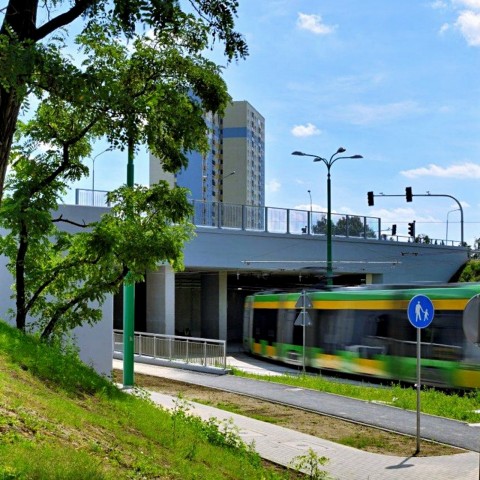
The transport infrastructure in Poland
For a few decades PeBeKa has been involved in many key transport infrastructure projects executed in Poland. In our operations, we rely on our extensive experience in mine building and knowledge acquired during the performance of contracts with foreign partners. Examples of projects executed by PeBeKa in Poland include the Fast Tram infrastructure in the Cracow Transport Centre, the “Politechnika” Fast Tram stop in Cracow, the Lecha Estate – Franowo tramline in Poznań, the rail connection to the Okęcie Airport in Warsaw, and the tunnel at the “Hulanka” interchange in Bielsko-Biała.
What is common for all these projects is their key importance for the transport infrastructure in the respective cities.
Among the largest facilities of this type, PeBeKa's portfolio contains the construction of the Fast Tram infrastructure in the Cracow Transport Centre, a project which considerably shortened travel times and improved the quality of moving around the city. The infrastructure comprised grade-separated track beds and specially separated tracks with unconditional passage priority. PeBeKa was performing its works within one of the most important interchanges in Cracow, two-level Mogilskie Roundabout.
Another facility worthy of mentioning is the rail connection to the Frederic Chopin International Airport in Warsaw.
Within the scope of this project, PeBeKa performed a part of works related to the construction of a tunnel, an entry ramp, and such auxiliary facilities as transformer station no. 1, a traction power substation, and an interlocking station. The result of the performed works was an underground station and an island platform capable of handling two trains at the same time. Commissioned on 1 June 2012, the railway line was one of the strategic and the most awaited public transport projects in Warsaw. It allows passengers to cover the distance from the centre of Warsaw to Poland's busiest airport in just 20 minutes.
Our acquired experience in advanced mining operations and contracts executed abroad allow us to use our unique know-how for the benefit of local communities. We are proud of the fact that various transport infrastructure projects in which we have participated improve the quality of life of the inhabitants of various Polish cities.
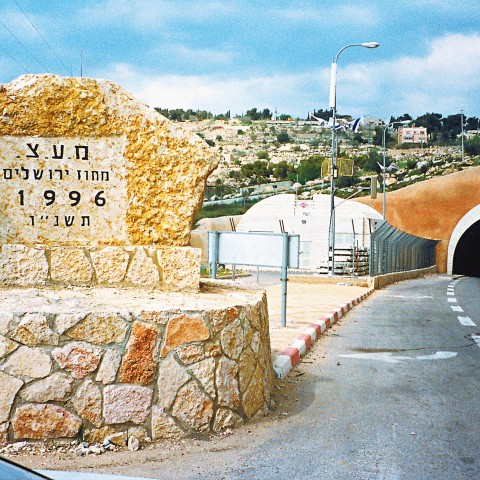
Tunnels built abroad
Our specialists have carried out many important and complex projects around the world. Based on our extensive experience and the highest safety standards, we have constructed tunnels in Israel, Turkey, Hong Kong, Algeria and Malaysia.
Our foreign contracts were frequently characterised by difficult technical, climatic and geological conditions. It was often quite difficult to perform project works in the middle of a jungle or on an uninvestigated soil.
Boring tunnels in the distant parts of the world, our engineers frequently resorted to methods requiring the use of explosives. In such circumstances, the mining experience and the high precision of PeBeKa specialists were particularly invaluable.
The proximity of buildings caused the frequent necessity to use special silencers on fans and machines, while the use of explosives was limited to daytime hours only.
Building tunnels in Ankara, Turkey, our engineers used, among others, the jet-grouting method to secure rapid railway tunnels in the area of the old river valley.
The performance of works in various parts of the world is a proof of foreign investors’ trust in our company. For the execution of their key infrastructure projects, they have selected no other company but PeBeKa. We are proud that the results of our operations contribute to the higher quality of transport services around the world.
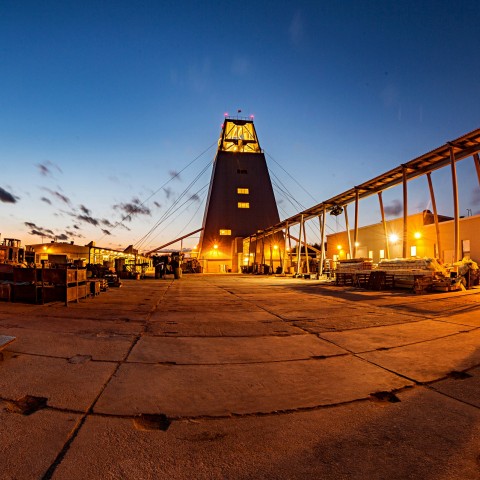
The copper ore mines in the Polish Copper Belt
The Legnica-Głogów Copper Belt (LGCB) is the main centre of the copper industry in Poland and one of the largest such centres in the world. Since the beginning of operations in the Copper Belt in the 1960s, PeBeKa has been the main contractor of mine shaft.
The company's engineers and specialists have developed a unique rock mass freezing method which allows access to the local copper ore deposits. So far PeBeKa has bored 30 shafts with the combined depth of 30 kilometres, which constitutes the company's base of knowledge, experience and opportunities in the area of mine shaft sinking.
Furthermore, in the LGCB area, the company has built over 1600 km of horizontal workings. In parallel to boring and drilling operations, we specialise in providing shafts and workings with all types of equipment.
Our specialists are also responsible for the installation of technological pipelines, air conditioning stations, power supply, lighting and telecommunication cables, as well as transport systems.
At present PeBeKa is involved in the sinking of the GG-1 shaft. It is the 31st shaft in the Legnica-Głogów Copper Belt and the key project of the KGHM Polska Miedź Capital Group. The shaft is to provide access to copper ore deposits lying below the level of 1200 m, which should ensure the continuity of the mining operations for many years to come. The target depth of the shaft is 1340 m; the internal diameter of its supports is to be 7.5 m.
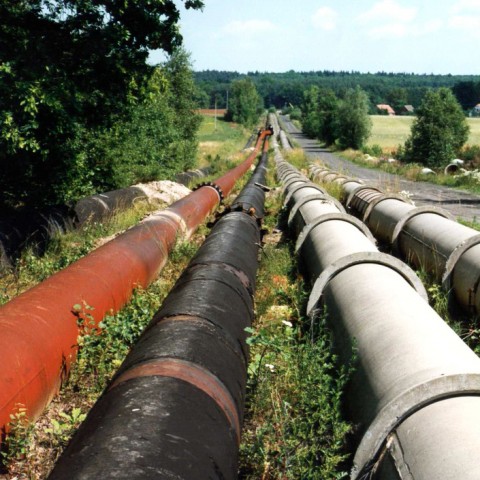
The Żelazny Most floatation waste storage
Located to the east of Polkowice and owned by KGHM Polska Miedź S.A., Żelazny Most is Europe's largest storage for copper ore floatation wastes generated by the company's mines and ore enrichment plants. With the diameter of over 14 km, the facility covers the area of more than 1400 ha. In 2001 a decision was made to replace the old section of the steel DN 800 pipeline.
Paying special attention to the safety of the environment and the local community, our specialists decided to carry out the project, using the relining method at long sections of the pipeline. The technology consisted in inserting PEHD 710x40.2 SDR 17.6 pipes, manufactured by KWH Pipe, into the existing pipeline and filling in the space between the two with a cement mixture. Decreasing the diameter of the pipeline did not reduce the flow rates because the hydraulic properties of the pipeline were considerably improved. The technology applied by PeBeKa is friendly for the environment, quick and effective.
An additional challenge for our specialists was the fact that the pipeline runs across the area of mining damage and numerous rock bumps connected with the mining operations.
For the performance of this contract, PeBeKa received the Limbur 2002 award in the category of The Project of the Year 2002 – Renovation. This award is a confirmation of the highest quality of the performed works thanks to which the transport of sludge to the Żelazny Most waste storage is faster and safer.
